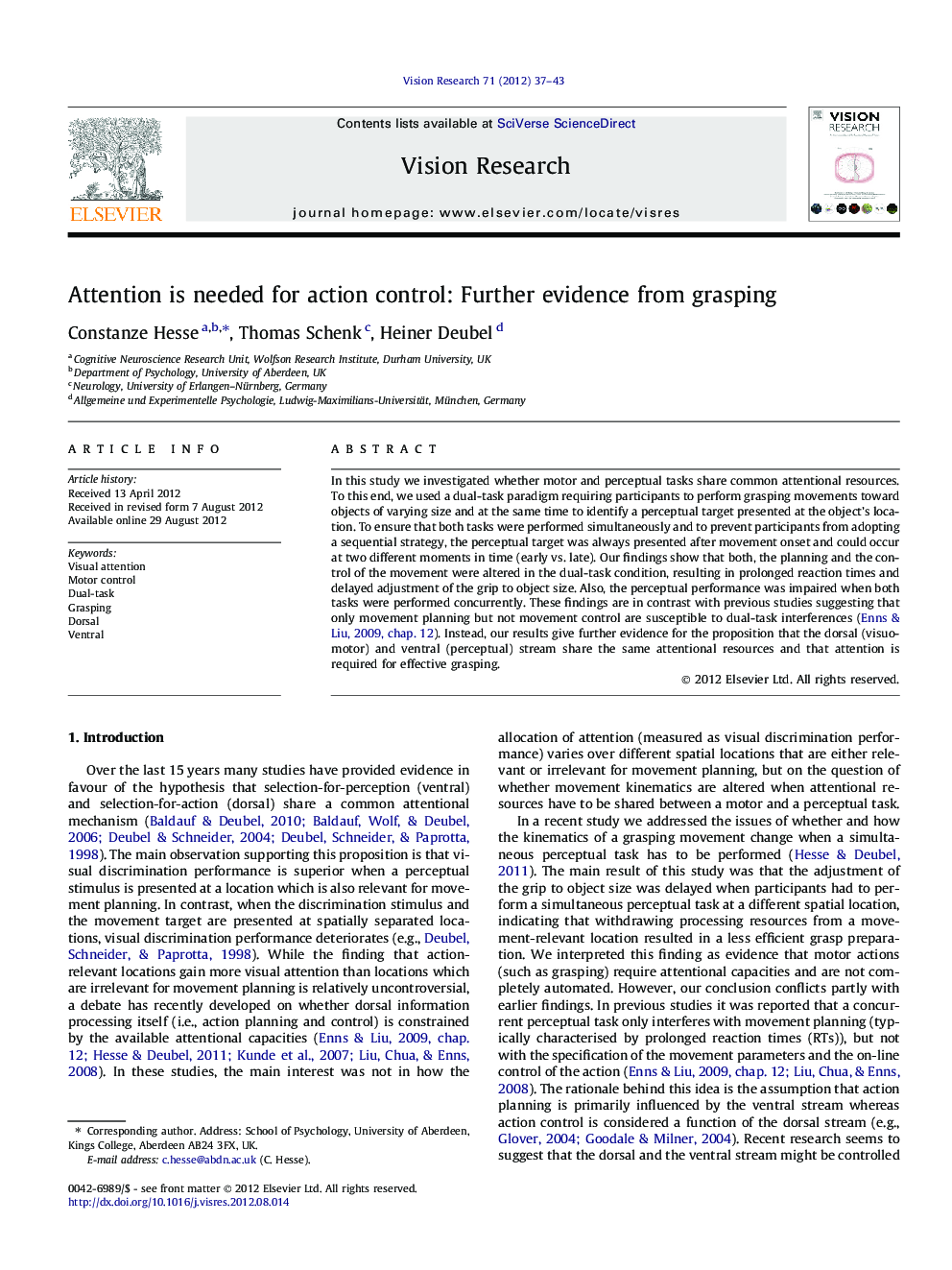| Article ID | Journal | Published Year | Pages | File Type |
|---|---|---|---|---|
| 4033904 | Vision Research | 2012 | 7 Pages |
In this study we investigated whether motor and perceptual tasks share common attentional resources. To this end, we used a dual-task paradigm requiring participants to perform grasping movements toward objects of varying size and at the same time to identify a perceptual target presented at the object’s location. To ensure that both tasks were performed simultaneously and to prevent participants from adopting a sequential strategy, the perceptual target was always presented after movement onset and could occur at two different moments in time (early vs. late). Our findings show that both, the planning and the control of the movement were altered in the dual-task condition, resulting in prolonged reaction times and delayed adjustment of the grip to object size. Also, the perceptual performance was impaired when both tasks were performed concurrently. These findings are in contrast with previous studies suggesting that only movement planning but not movement control are susceptible to dual-task interferences (Enns & Liu, 2009, chap. 12). Instead, our results give further evidence for the proposition that the dorsal (visuomotor) and ventral (perceptual) stream share the same attentional resources and that attention is required for effective grasping.
► Grasping kinematics change when a concurrent perceptual task is performed. ► Dual-task interferences are observed in movement planning and movement control. ► Ventral and dorsal stream are not controlled by separate attentional mechanisms. ► Efficient grasping requires attentional resources.
